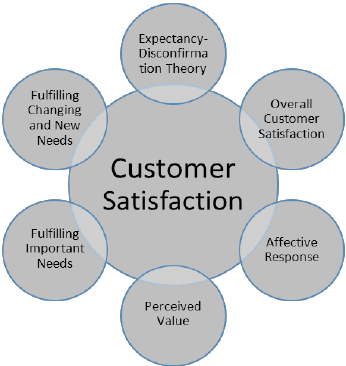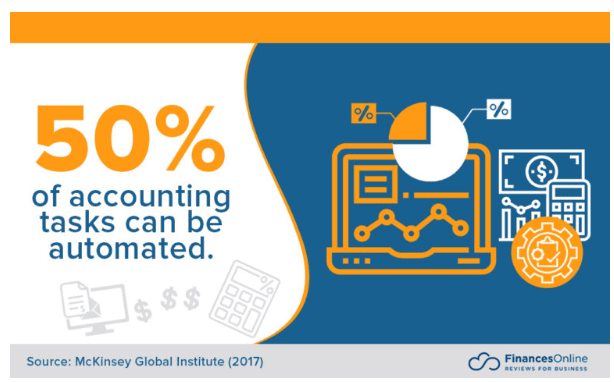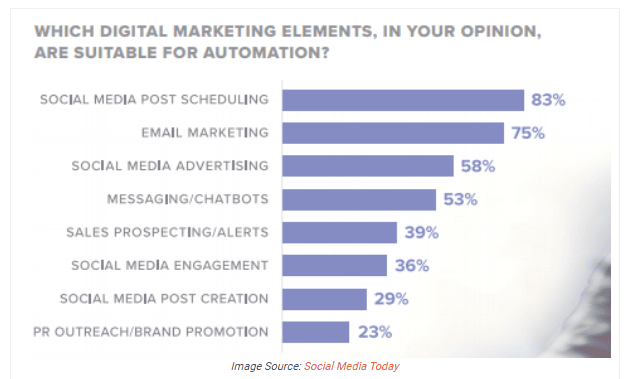7 Ways to Automate Your eCommerce Business



First things first. You need to give yourself a big round of applause for having the courage to run an eCommerce business.
Why?
Well, because e-commerce is not for the faint-hearted — that’s for sure!
And with the number of security threats in the e-commerce space increasing by the day, many businesses are still jumping onto the e-commerce bandwagon mainly because of the existing opportunities for growth not to mention because that’s where most consumers are spending most of their time nowadays.

Image Source: Magneto
The other reason is that the benefits of playing in the e-commerce ecosystem outweigh the risks since there are many reliable and solid security solutions out there that can protect your business from being attacked.
While it is not everyone’s cup of coffee — some still prefer the good old brick and mortar way of doing business — owners of e-commerce stores are reaping handsomely from their online sales.
One of the things you must have realized is that running an eCommerce business can be quite demanding. There are a lot of things that require your attention nearly all the time.
Some activities require your attention simultaneously, which can be tricky for some business owners. Let’s face it: most e-commerce biz owners have to work hard at prioritizing activities to ensure the smooth running of the business — isn’t that right?
However, it can become a tad difficult at times to prioritize when all the tasks/activities demanding your attention share equal importance. As a result, dilemmas and confusion have become the norm and you/ your employees find yourselves at crossroads for the better part of the day.
Instead of running the day, the day pretty much runs you and your team.
Does this describe your current situation? Are you there wondering how best to approach this scenario without ruining the operations of your e-commerce business?
Worry not because there’s a solution to this and that solution is automation!
Automation of business processes helps you make the most out of the resources your company has.
The majority of companies that have embraced automation are already enjoying a competitive advantage in their markets. According to recent research, 59 percent of businesses will have fully automated their operations by 2022.
Don’t get left behind!
Why Should You Consider Automation in Your e-commerce Business?

There are many benefits of automating business processes such as:
By automating tasks, you free up your workers from many routine tasks that do not really require human intervention.
This gives you the opportunity to reorganize your company structure and channel more energy, resources, and focus on innovation and more creative tasks.
If you’ve been looking for areas where you can reduce costs significantly, automation is definitely the way to go. In simple terms, automation means the availability of more man-hours for your business.
As such, your e-commerce business will enjoy a similar output level even after a decrease in the human workforce.
Things don’t have to remain the same though. You can now begin to put more focus on the quality of your members of staff, instead of quantity. Ultimately, you will be in a better position to minimize the overall costs of running your e-commerce business.
Humans are prone to committing errors, irrespective of how efficient we are. We cannot avoid human errors completely.
On the other hand, automation can help you to limit the possibility of the occurrence of errors in the business processes. While we cannot utilize software to operate all areas of the businesses, the integration of automation software can greatly assist in its reduction, and in some instances, in the complete elimination of the costly human errors at every phase of the business process.
One of the secrets that the most successful online-based businesses share is the desire and readiness to pursue the highest level of collaboration at all times, especially when handling complex projects.
The task of keeping track of every team member and making sure that there is the free flow of information is never easy – particularly in large and busy organizations.
However, when you automate processes, it becomes much easier to monitor project tasks, to update the various teams and to also set clear goals and their corresponding timelines.
How do you manage your business information? Automation gives you and your team access to information about everything that goes on in the company. For instance, the customer service team can easily share customer data with other relevant teams who do the follow up such as sales and marketing teams.
The availability of such information means that you can not only analyze but also seek a deeper meaning of the company data. Automation of business processes allows you to gain more insights about the different areas of your business, and, if properly implemented, such ideas will help you stand out from the rest.
Having better business insights also means that you can easily and quickly identify problem areas in the operations of your e-commerce business. This will, in turn, help you change what needs to be changed to help the business operate optimally.
Knowing what is happening at any given time is difficult when you have several systems in place. For example, how would you know that a lazy employee got rid of tasks they didn’t want to deal with?
In the absence of the right processes, it would be almost impossible to determine the deletion was accidental or deliberate.
To increase customer satisfaction, automating order processing is a key step. Streamlining your order processing through services such as Rush Order, can help businesses manage fulfillment and customer service more efficiently. By automating these processes, businesses can reduce errors, speed up delivery times, and keep customers informed with real-time updates. This leads to a smoother shopping experience, higher accuracy in order fulfillment, and ultimately, greater customer satisfaction.
Through availing a digital trail throughout operations, automation ensures accountability. Everyone across varying systems becomes more accountable and in due time, you stop dealing with issues that could have been easily avoided.
You cannot determine how well your e-commerce business is doing amidst the maintenance of separate accounts, spreadsheets, and processes. To establish the number of projects completed every day, as well as the speed of project delivery, you will have to collect information about every worker’s performance in order to view the organization as a whole.
The best and easiest way to increase such visibility is through automation tools. The right automation tools will help you centralize data and as a result, make it easy for you to holistically figure out the performance of your business and that of your individual employees. It also becomes much easier to view how each department is fairing.
It is almost impossible to grow your business without first satisfying the needs of the consumers. As such, customer satisfaction is a critical element to the growth and profitability of your business. One incredible way of ensuring customer satisfaction is by automating business processes.

Image source: ResearchGate
Automation ensures that customers receive more accurate as well as more consistent products/services. By knowing that they can trust you to meet their needs, their loyalty to your company keeps growing.
Most importantly, automation simplifies customer service besides making it more efficient. For instance, with automation in place, it becomes easier for the customer service team or sales and marketing team to retrieve their information in record time without having to go through a pile of papers.
Modern consumers appreciate fast and quality service. These two elements go a long way in increasing their trust and loyalty.
Are you looking for ideas on how to automate your e-commerce business? Check out these ideas below.
7 Ways of Automating Your e-commerce Business

1. Sales Scheduling
Don’t we all love good deals? Absolutely!
Intensified competition has given birth to more frequent sales than before. What’s more, stores aren’t wasting the opportunity to inform their customers of an upcoming sale. They keep the customers engaged and hyped through countdowns and teasers, for example, to the last minute in order to build momentum and attract more traffic.
You can adopt a similar strategy. Are you planning price changes on your products/services? Well, you need to keep your customers in the know!
Whether it is a small promotion or a mega sale, consider predetermining the period it will happen and the discount rates, and then automate the whole process. For people operating large e-commerce stores, it is nearly impossible to tweak prices manually each time you decide to go on sale.
The beauty of automating such a small but extremely important task is that when the sale goes live, the price changes on your e-commerce store will roll out automatically. Just like that.
No need to waste man-hours tweaking a whole bunch of prices. Your staff can do other things instead. A good example of such tools is Shopify Flow. It helps online-based entrepreneurs to save tons of work, besides reducing error rates.
2. New Product Rollouts
Each time you are launching (a) new product(s), the first thing that you need to do is put it up on the website. From there, you must handle other tasks aimed at helping you reach as many people as possible to inform them of the upcoming launch. Such tasks include posting on your social media and other sales and marketing platforms.
If you are tired of dealing with all these time-consuming and routine tasks, you may consider automating the process. Apart from saving you a substantial amount of time (that you can spend on more important tasks), automation makes the process more efficient, not to mention trackable.
The software industry is not short of tools that can enable you to preload your new range of products and have them published on your website automatically and in other sales channels.
Be careful though. In as much as we desire to automate everything, we mustn’t lose the personal touch. Consumers are social beings who value personalization.
The moment they realize that you aren’t offering personalized services, they won’t think twice about moving to your competitor. As such, consider tools that help you achieve a good balance.
3. Accounting
No one loves to spend hours on end going through transactions, returns and refunds, discount codes, invoices, as well as payments, especially where a large e-commerce store is concerned. Add this to other things that you must handle within the company. You can easily go crazy.
Luckily, there are many accounting automation solutions that you can explore.

Image source: Finance Online
Just like inventory management, accounting must happen dynamically each time a sale takes place. A good way of making it happen is ensuring that customer and purchase information is submitted to the company’s accounting application right from the inventory management system. For example, if you are using Shopify, leveraging the best inventory management software for Shopify helps ensure that stock levels are accurate and updated in real-time alongside financial records.
One of the ways of handling such information is recording every sale as income and every supply order made to the vendor as an expense. When it comes to refunds, the customer can be advised to request a credit note which they can use the next time they are buying a product in the online store.
Seek a seamless integration between the e-commerce store, the inventory management system and all the firm’s accounting applications to ensure that all these processes take place automatically without the need for human intervention.
That said, do not entirely dismiss the importance of working with a professional accountant/bookkeeper. Evaluate your business needs to determine if you are better off with an outsourced or in-house service. You can also consider integrating a nearshore development team or nearshore accounting team within your in-house staff, which can offer high-quality talent and cost savings.
Apart from the usual stuff, accounting professionals are important for keeping your tax codes updated and ensuring that your business satisfies all the regulatory requirements. Lastly, accounting professionals leverage IDP solutions for logistics to streamline financial processes, enhance cost management, and ensure regulatory compliance in e-commerce operations.
4. Minimize cart abandonment rates
The frustrations associated with an ever-growing rate of cart abandonment is indescribable. Customers abandon carts for varying reasons. Of course, some customers are habitual window shoppers who have no intention of spending money in your e-shop (or in any other e-shop).

Image Source: Baymard Institute
However, serious buyers abandon carts the moment they realize that the deal they are pursuing is not exactly worthwhile. Examples of the things that put them off include surprise shipping rates, the absence of express shipping, and complex checkouts.
Try automating certain aspects in this stage to encourage the customer to go all the way. Make them see that they are getting a good value for their hard-earned cash. One such way is by adjusting prices at the checkout point and including an explanation such as purchasing X quantity, purchasing a combo or even indicating the discount applied.
Another element you can automate is a discount application to particular customers that have earned tags such as gold members or subscribers.

Image source: Finances Online
When it comes to shipping, automate this feature so that the system can pick the location of the buyers and automatically offer rates in their currency. Don’t give your customers a hard time converting rates to see if it is in their favor.
In any case, you are giving them more reasons for abandoning the cart and shopping in a more favorable e-commerce store.
Lastly, consider investing in an application that sends out purchase reminders to customers who visited your website, shopped particular items and then abandoned the cart. Such apps are quite effective for sending friendly reminders to customers about the items they are interested in.
An abandoned cart email helps companies get more sales from website visitors who might have exited due to reasons such as inadequate funds, unstable internet connection and so on. Even if not all customers who receive the reminder will buy, it is a good way of increasing conversion rates. Keep doing it and your efforts will begin to bear fruits eventually.
5. Customer service
This is the most ‘human-centric’ division in the organization. The diagram below highlights the major differences between customer experience and customer service.

Image source: IT Chronicles
And while the temptation to automate every task in the organizations keeps following us, there are some areas where automation would not be helpful.
One such area is customer service. You must be careful about how you approach automation in this sensitive department. The focus should be put on partial automation to avoid the complete removal of that important human element.
You can do a couple of things to supplement this function with automation and consequently, streamline the interactions you have with the customers. For instance, instead of imposing direct interactions with employees of your business, or handling a bunch of emails and tickets, you can use a customer service platform that offers several mediums for automated service.
Use tools capable of taking some work off your back. For instance, some companies use desk.com to build an interactive question and answer segment, Frequently Asked Questions section, as well as the knowledge base. Such self-help tools take some work off your customer service employees back and are also good at resolving customer issues faster and more efficiently.
Another customer service automation solution you can adopt is a platform that permits ticket submission as opposed to the ‘contact us’ forms that turn into emails. The beauty of support tickets is that the company can prioritize them and have them automatically assigned.
Support tickets free up a lot of time that would have been used filtering incoming email requests. It means that the customer support team can have more time to solve customer issues.
Lastly, make sure that you have a live chat interface. If you don’t want to assign someone to handle customer requests communicated via live chat, seek the services of vendors who allow you to outsource and automate support – especially when it comes to handling the questions posed by prospective buyers.
Bottom line: the best way of handling customer service is the manual way to retain the human touch. The only reason you should consider automating customer service is when you want to streamline the department in a manner that leverages your team, and at the same time, allowing you some breathing space.
6. Welcome email
Email marketing has yet to lose its magic and if you thought that it is going away, you were completely mistaken. While a few things have changed with respect to the approaches used by companies, email marketing is still just as relevant and important as other digital marketing techniques.

Image Source: Sankif
A survey by Social Media Today identified email marketing on the list of top three processes a business can automate without interfering with audience connection and effectiveness.

Image source: Cazoomi
One ROI-generating way of use email marketing is through a welcome email. With an open rate estimated at 84.22 percent, you should seriously consider having an automated welcome email in place.
Your marketing automation software should help you determine how a customer landed on the subscription page and the product or page they spent the most time on. This will help you customize the content of the welcome email for a better impact.
You may also want to consider attaching a discount code to the welcome email when dealing with first-time visitors. A good example of a dependable email marketing solution is Mailchimp.
Conclusion
These are just some of the ways you can automate your eCommerce business. By automating the above business processes, your teams can focus on other critical aspects of the business and in turn, accelerate your company’s growth.
There are so many solutions in the market so make sure you pick the right automation solution for your business. This is not just the one that fits your current, immediate and future business needs but the one that also helps you to keep on track with the sales and marketing of your eCommerce products.
To pick the best eCommerce automation solution, consider factors such as availability of real-time processing (to ensure an updated system at all times), guaranteed data validation as well as monitoring capabilities, reliable customer support personnel, and the presence of prebuilt APIs and connections.
However, don’t rush the process. Instead, take your time and remember to pay attention to your business needs, including the financial situation of your eCommerce store.